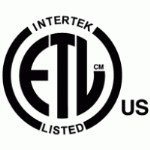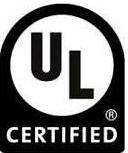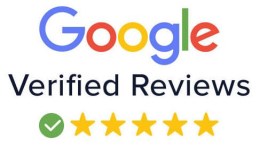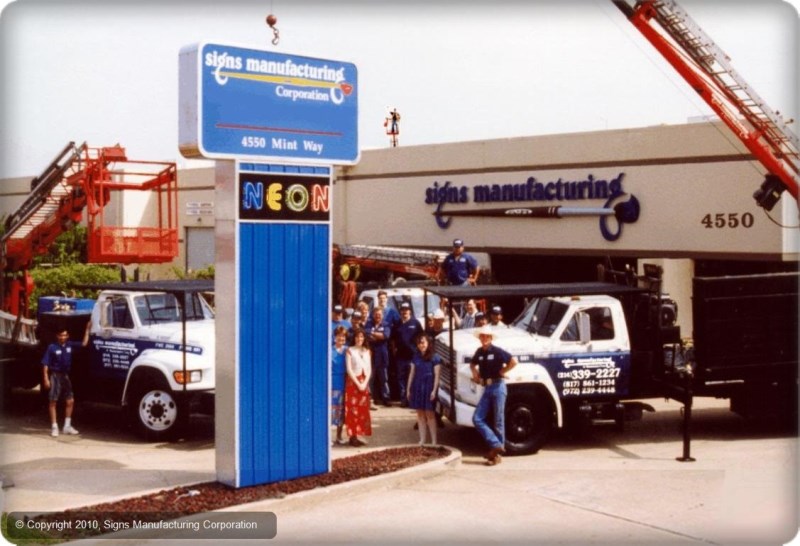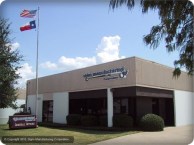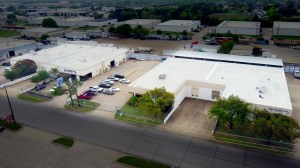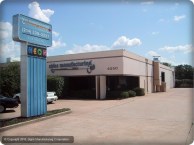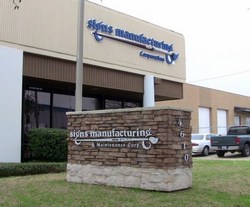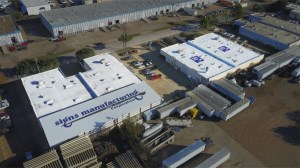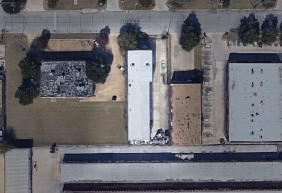|
DFW's Largest Custom Sign Company |
||||||||||||||
|
Call Now! We're waiting!
Our Team of Experts are standing by to Answer Your Questions: (877) SINCE79 toll-free (214) 339-2227 Dallas (817) 861-1234 Fort Worth/Arlington (972) 850-3300 Other DFW Areas (254) 582-7446 Hillsboro/Waco Areas (903) 561-5959 Athens/Oklahoma (940) 365-3433 Denton/North Texas Email our Sales Team: |
||||||||||||||
|
Click HERE, or Call, to Request a FIRM, Installed, SAME-DAY PRICE QUOTE (NOT just a simple, non-binding "Estimate") How to Open a Successful Retail Business LocationSigns Manufacturing™ has been building quality signs for schools, shipping and installing them since 1979.North Texas' (DFW's) Largest Custom Sign Builder We sell our signs FACTORY-DIRECT, WHOLESALE to the public, INSTALLED.
The convenience and popularity of online shopping is undeniable, but in-store shopping remains an essential part of the consumer experience. In fact, McKinsey & Company verifies that 85% OF ALL RETAIL SALES COME FROM BRICK-AND-MORTAR LOCATIONS. An appealing shop will draw people in and create a memorable experience that leads to sales and builds customer loyalty. Whether you’re starting a new venture or looking to expand your online business with a physical location, opening a brick-and-mortar store requires careful planning. Experts in industry outline the steps you need to take to make sure your retail store is a success. 1. Generate an idea and business plan. The first step to opening a retail store is developing your idea and a business plan. When determining what type of store you want to open, you should answer each of the following questions:
There are dozens of other questions that need to be answered, but opening a retail store is like starting any other business. You must determine what you want to sell and who makes up your target audience. It’s important to create a retail store that satisfies a need of your customers. “Know your competition,” said Juli Lassow, founder and principal of JHL Solutions, a retail business management consulting firm. “No ideas today are fully original. Understand what options your customers have to you and your offering … Once you understand your competition, build out your strategy to compete. Will it be on price? On quality? On service? On variety? Be specific on what your competitive advantage is. Know how to communicate that to your customers through marketing and presentation.” It’s important to understand your competitive advantage and what makes your business unique. Retail is competitive, and you need to be clear on your plan to find success. Identifying how your business helps your target market is arguably the most important aspect of opening any business. Other basic factors to consider include business funding and marketing ideas. Will you need to use business loans? Will you take on investors? What types of marketing channels will you use? Does your team need people specifically for social media marketing? What online channels do your customers use? Once you’ve answered those questions, you should write a business plan that outlines your goals and details how the business will operate. The plan should include marketing possibilities to communicate your unique selling proposition to consumers, and you should consider tech trends and marketing strategies. It should also contain important financial information like funding and the costs of running your business. 2. Choose a name for your retail store. In addition to the other basics that go with creating a business plan, take time to find a good business name. When choosing the perfect business name you should consider a few factors:
The name alone won’t determine the success of your business, so while it shouldn’t be the focus when opening a retail store, you do want to make sure you have a name that fits your brand identity and that customers will remember. It’s also important to check that the name isn’t already trademarked or used. You can start with a quick Google search before taking a deeper look at state databases of unavailable business names. If it’s available, make sure to trademark your business name. 3. Cover your legal basics. Covering your legal basics includes choosing a business structure, following any regulations and obtaining the right licenses and permits. “If you are opening a retail store for your business, you will need a few common business licenses and permits in order to stay in operation and remain in compliance,” said Deborah Sweeney, CEO of MyCorporation. A few of the basics include:
When it comes to selecting a legal structure, you follow the same process as most businesses. For retailers, however, becoming a sole proprietor can be risky. Taking on a business structure that doesn’t place liability solely on the individual owner is a good way to mitigate your risk, should the business fail. It’s common for retailers to become corporations or limited liability corporations (LLC). Both of those options help limit personal liability. Online legal services can help you navigate the complex legal issues surrounding opening a retail store for a lower price than traditional attorneys. 4. Get your finances in order. Once you have a great business idea and a plan to make it happen, you need to start thinking about the financial aspects of opening a store. A physical location means incurring significant overhead costs upfront, so you should start lining up funding right away. You might consider a small business loan to get things up and running. It’s important to research your options and try to get the best rates possible. Unfortunately, some new businesses won’t qualify for a loan, but there are many other financing options, such as investors, grants and crowdfunding. You should also create a list of the fixed and variable costs that may affect your business. It’s easy to brainstorm a potentially successful idea only to forget about hundreds of thousands of dollars in costs. Consider property and equipment leasing, equipment purchases, staffing needs and other costs specific to your business when developing your business plan. 5. Find the right location. Finding a prime retail space needs to be a focal point. While it can be tempting to try to pick a cheap location and hope your business generates a steady flow of customers through its marketing efforts, sometimes there’s no substitute for being in a busy part of town. Picking a location downtown might be a pricier option, but it could bring in thousands more customers per year. “First-time retailers need to be wary of trying to save money on rent if they are not a true ‘destination retailer,’” said Bethany Babcock, founder of Foresite Commercial Real Estate. “Poor access or awkward positioning in the center can keep clients away. The retail real estate business is very psychological, and the price [of real estate] is usually one of the last considerations for most retailers.” And remember the axiom “Location, Location, Location!” The supreme importance of “location” is the numbers of potential customers that will see your sign...and be able to read and understand it. These are very important design and marketing considerations. If you are located in the Dallas/Fort Worth "Metroplex" in Texas the Texas Department of Transportation has probably counted traffic in front of your new location. Go to https://trafficcounts.nctcog.org/trafficcount/ to see how many vehicles will see your signs every day! Other regions have similar information available. When choosing a business location, you want to meet your customers where they are. Find out where your target audience spends their time, and look for a space close by. What might seem like an ideal spot could turn out to be a huge mistake if it’s inconvenient for your customers. Don’t forget to keep storage space in mind. If you expect to have a lot of inventory, because you sell a lot of items at affordable prices, you may want additional space. But, if you don’t keep a lot of items in stock, paying for extra square footage would be a waste. 6. Make sure your meaningful signage will be allowed. Check local regulations to discover what signage will be allowed. Make sure your potential retail space will allow for maximum signage sizes to be installed. Make sure your landlord will allow this signage. Don’t sign a lease agreement until the landlord has approved your signage, including window signage and detached signs (multi-tenant sign panels, individual pole/pylon signs, monument signs, electronic message centers, flags, directional signs, etc.) 7. Your Signage Largely Determines the Success of Your Business Individual, lighted, “Channel Letters” are the storefront sign that identifies most retail businesses. Your sign is your voice on the street. It’s a primary means of communicating with customers. It attracts them, draws them through your doors, and encourages them to buy your products and services. Your sign IS THE IMAGE of your business, at the very least it is the first impression that gets potential customers to come in the door. And if you advertise, or create a webpage or Facebook presence, you will feature your sign. What image do you want potential customers to have? The quality of your sign should match the quality of your business to give potential customers the right first impression. Cheap, or professional? Basic, or interesting? Shoestring, or successful? Neglected, or attentive? Your sign conveys all of these messages, and more, to your potential customer BEFORE they become a customer. LOOKING CHEAP IS ONE OF THE MOST EXPENSIVE MISTAKES A BUSINESS CAN MAKE! Make sure you are marketing your business properly. The sign, if it's a quality sign, will be the only thing that sells for you 24/7 without any ongoing expense, or work, from you! “A sign can make or break your business. Size, design and wording can be the deciding factor as to whether a new customer walks through the door or keeps driving to your competitor, according to a survey by FedEx Office®.” Almost 8 of 10 shoppers (76%) percent said they would enter a store they’ve never been in before based solely on its sign, while nearly 7 of 10 (68%) have actually purchased because a sign caught their attention. While signs draw in customers from the street, they can also be good word-of-mouth marketing tools; 75% of those polled said they’ve told someone about a business simply based on its signage. Again, 7 of 10 respondents (68%) said they believe a store’s sign is reflective of the quality of products or services that the business offers and 52% said they are less willing to enter a business with poorly made signs. If you think a sign isn’t worth your investment, think again — 6 in 10 consumers won’t enter a business with no signage. (Alicia Ciccone, Huffington Post.) Of course the best, and cheapest, form of advertising is word-of-mouth. Consumers main reason for giving word-of-mouth mention is self-enhancement. (Mitchell J. Lovett, et.al. Journal of Marketing Research.) Remember that FedEx (above) found that 75% of consumers give word-of-mouth mention based solely on signage. Consumers MUST be impressed with your sign. Signage is the most targeted advertising you can do according to the U. S. Small Business Administration (SBA), which also states that 85% of a business’s sales usually come from within a 5 mile radius. Your sign constantly advertises your business to a potential customer who frequents the area where your business is located. With 18.6% of the entire US population moving each year, your sign will be constantly seen by MANY potentially new customers. According to the Small Business Administration “The average business gets over 50% of their sales just from their signage.” If a sign costs you money it is not doing its job. It should effectively advertise your company and earn you money. “…research from the University of California at Berkeley found that 68% of purchases were unplanned during major shopping trips and 54% on smaller shopping trips. To take advantage…your business will need an effective sign to attract attention.” according to the NewYork State Small Business Development Center Good signs incorporate design and marketing decisions creating the message, look, colors, sign types, sizes, quantities, etc. to create the required impact. Again quoting Small Business Administration research, 89% of businesses that fail do so because of improper signage! AT&T gave this advice to Yellow Pages customers, "If business is slow, what does your sign look like?" AT&T recognizes that you need Signs that Don’t Age™ to survive, or you need to replace your signage often. In other words, Signs that Don’t Age™ will make you more money than a “cheap” sign. “To make your business stand out, be prepared to spend on your signage” according to Steve Strauss, USA TODAY “Main identification signs for businesses, attractively designed and made so as to draw attention, don’t cost a penny. So long as they remain in good repair they earn you money. Anyone not recognizing this should not start a business.” states the Small Business Administration The importance of signage in helping a business to survive was recently underscored when the Small Business Development Center (SBDC), with their NxLeveL for Entrepreneurs training program, which is available in 40 states, added an entire week to their program to present more deeply “…the importance of signs and their impact on a business…” 8. Your Success will Probably be Signage Driven Unless you are introducing a never-seen-before product that doesn’t require money to obtain, a new business, school, or church must take customers and money from pre-existing established competitors in order to succeed. Recall that over 50% of the average business’ sales are proven to be generated just by their signage. The attention-getting appeal of signage in attracting customers is historically proven. You must look better than your competitors; and your competitors are everyone else. Don’t shoot yourself in the foot. 9. Can your Business Survive with a Cheaper, Less Impressive, Less Durable Sign? Maybe, certainly some have. But knowing the probable effect a sign will have on your success, is it a gamble worth taking, especially considering the minuscule cost of a good, properly made sign when spread over the lifetime of the business? Most probably, this is the most important investment you will make, good or bad. “A good sign advertises success.” According to Profits in Everyday Business 10. The Importance of Signs both Night and DayThe importance of day/night signs to you cannot be overstated. The difference is truly night and day! Surprisingly 30% of traffic on almost all business streets occurs when it is dark; people see your sign only if it is lighted when it is dark out, including on dark days when everyone else's sign is lighted. Read about our “The Eye of Texas™.” In today’s business environment the need to use both light and color to attract attention during the day is becoming more critical. A simple set of channel letters won’t help your business survive anymore; sophisticated shoppers expect more. North Texas averages 5 hours of bright sunlight, 7 hours of reduced sunlight, and 12 hours of no sunlight daily. With the controlled lighting in our Sign Lighting Laboratory and Showroom (see pages 9 and 10) we can show you how a sign looks during full daylight, on the cloudy days, and at night. Together with our IMAGEKRAFTERS™ Design Consultants we will create a sign using lighting and colors to help you earn a living 24/7. NO OTHER SIGN COMPANY CAN DO ALL THIS; we’ve done it over 100,000 times now. Our base team has been together 45+ years. 11. The “Google® Effect”As Google® and others develop virtual reality 3-D images of business districts, for use with virtual-reality glasses, the importance of signage will be magnified. Consumers will enter a product or product category, and Google® will show them, virtually, where this product can be purchased. No longer will the business’ signage only compete for attention with neighboring businesses, storefront images will be compared for every competitor in the entire DFW Metroplex, in 3-D (with motion?) Business’ with eye-catching signage will find it easier to succeed in the future (lots more free advertising.) Other businesses will find it harder. Actual physical location will remain important, but be less restrictive to success. 12. 80+% Potential Sales/Use Tax Savings – Separated ContractIf we are manufacturing and installing a newly constructed sign on a newly constructed building, or a new free-standing sign, the State of Texas only requires Sales/Use Tax to be paid on our cost of materials, NOT the full price of the sign, because of the “Separated Contract” we will offer you. Our invoices, according to State Law, are the controlling part of a “Separated Contract.” In the instances above we will provide you with an invoice which is written to reflect Texas Sales/Use Taxes for the materials only. You will save much more than you can from most competitors. Because we are actually the manufacturer, we can legally charge sales tax only on our cost of materials, not on what we paid someone else to build and ship the sign to us. Also, only the actual installing contractor can provide any tax savings, not a sign store or broker. This is an average savings of 80+% of the usual Sales/Use Taxes! 13. Your Sign EARNS You Money from Day One!What does a sign really cost? Of course you have to invest money in a lighted business sign so that it can create you income. But, a sign can’t cost you money, it has to make you money. It is an investment to make your business grow. So, when does a sign start making you money? From the very first day! Visit our website at www.signsmanufacturing.com/channel_cost.htm and use our Sign Cost Calculator™ to determine YOUR break-even point. Or, ask our salesperson to run the numbers with you. For an example let’s decide if we can afford to pay, or borrow, $10,000 to add to the cost of our channel letter sign to enhance its look and improve our image, and expect the business to pay for it out of future profits. You may want to spend more, maybe less. If you were to borrow 100% of the money to purchase this sign, and pay it back over 6 years with a 10% interest rate, your additional monthly payment will be about $185 per month. Add to this the monthly additional operating costs for electricity, insurance, and property taxes because of the more-valuable sign – the sign’s ONLY other costs. For our example we will use a $190 per month total cost ($6.25 per day during the loan period.) The sign is a capital expense, and the interest paid is an expense, both saving you income taxes on your investment. If you are in the 25% tax bracket (0% tax bracket in red) this will return to you over $3,300 ($0) in Federal Income Taxes you would otherwise have been obligated to pay during the loan period. This reduces the break-even point by about $1.50 per day to $4.75 (still $6.25.) Because of “expensing,” you recover over $2,600 ($0) of your investment the first year. (Corporate tax rates run to 21%; pass-through corporations, businesses, and individuals to 37%, so your savings could be significantly higher.) How much business will the sign need to generate to pay for itself? You probably operate with a 25% to 50% cost of goods, depending on the type of business. Will a beautiful front-and-back multi-color lighting set of channel letters in front of your business attract more than $10.00 – $20.00 ($12.50 - $25.00) in additional daily business (which also covers the cost of the goods you sell?) Of course it will. Signs like these beautiful attention-getting signs make you money; they don’t cost you a penny. You want the best signage your initial cash flow will support, because you want your business to grow. Remember, history proves that the average business gets over 50% of their sales just from their signage. 14. Shopping for Signs - What you will need to know first What is your budget? Did you know that you can obtain a pre-approved maximum Lease amount, with a known monthly maximum payment amount, prior to your deciding what is the best signage for you? Ask your salesperson for information on leasing, and access our online Lease application, "click" on the "Lease Information" tab, in the left column of our website, signsmanufacturing.com. 15. Your Most Effective Means of Advertising – and the Cheapest According to the SBA the average business street in America has a traffic count of over 20,000 cars per day (some over 10 times this) with 1.59 people in each car. Over a 10 year period just 20,000 cars equates to a $0.000065 cost-per-view on a $10,000 one-time investment in signage. This is the cheapest advertising you can possibly do, by far! Plus, everyone that sees THIS advertising is actually a potential customer, now – and 15 years from now. 16. Create a personalized experience. Finding success in retail often comes from adding value that competitors don’t provide. With the convenience of online shopping, physical stores need to offer a reason for customers to visit. Personalization and a quality in-store experience are important ways to consistently attract customers. Marco Castelán, senior principal of The Navio Group, a retail business consulting firm, said, “I think the biggest question an entrepreneur needs to ask himself/herself is simple: Can I provide the customer a new experience? It doesn’t matter that you are selling items that can be bought elsewhere. The biggest way to differentiate yourself is by creating a unique experience for the customer, because you are creating value that cannot be replicated.” The key is understanding your customers so you can offer them value that they won’t be able to find elsewhere. Personalize the experience in a way that makes them want to spend their money with you and keep coming back. That could mean providing helpful in-store staff, allowing them to try out products or offering free samples. Every decision you make for in-store operations should emphasize creating a unique experience for your customers. 17. Build vendor relationships. Small business owners face challenges, and it’s important to consistently please customers despite those challenges. Building strong relationships with vendors is a good way to prevent issues. You’ll want to find a vendor who not only offers quality merchandise at affordable prices, but is also reliable and fixes issues as they arise. It’s worth making contact with more than one vendor so that you always have a backup in case something goes wrong. Quickly developing relationships with multiple vendors will set your business up for success. However, this can prove difficult if you’re using overseas vendors. “The global supply chain is changing rapidly,” said Lassow. “Current trade uncertainty makes it difficult to build global relationships that will provide you with the goods and services you need. If you plan to fully or partially source your products from outside of the U.S., get support. Be sure that part of your operations planning includes partnering with experts in sourcing, logistics, customs and tax.” 18. Determine staffing needs. Finding dependable staff is a critical part of your retail store’s success. As you develop your business plan, you should think about the different job roles that need to be filled and how many people you can afford to bring on. Make sure you have all the right state and federal paperwork and remain compliant. While finding employees who are qualified on paper is important, you also want to make sure that they are a perfect fit for your brand. Staff can leave stronger impressions than the actual product, so you’ll want to make sure you employ people who make customers feel welcome and engaged. The hiring process can be daunting, so if your budget allows it, consider a HR outsourcing company to help find the perfect team. Employees are the face of your company and can make or break your business. Beyond resumes and interviews, there’s a lot to consider, so make sure you hire the best employees for your retail store. 19. Hiring and training Your staff acts as the bridge between your products and your customers. Create job descriptions. Clear roles attract the right talent and set performance expectations. Train employees on store operations. Well-trained staff insure smooth operations and customer satisfaction. 20. Customer service The success of a retail business often hinges on the quality of customer service provided. Establishing clear customer service policies ensures consistent interactions. Training sessions can empower staff to handle customer queries and complaints effectively. Creating channels for feedback can provide insights into areas of improvement. Reward programs or loyalty schemes can encourage repeat business and foster customer relationships. 21. Security and loss prevention Ensuring that your business remains secure is paramount. Installing security cameras can deter theft and provide evidence if needed. Train employees on theft prevention. Knowledgeable staff can minimize theft occurrences. Develop policies for security breaches. Preparedness ensures swift action during security incidents. . Regularly reviewing footage can also offer insights into customer behavior and store operations. 22. Choose business software solutions. Technology has made taking care of the day-to-day tasks of running a business much easier. But to ensure that your business runs as smoothly as possible, you’ll need to dedicate time to selecting quality small business software solutions. That means determining what your specific needs are and researching the best options. Most businesses will need a POS system to take orders and process payments. Many include hardware and competitive credit card processing rates. You should also consider the accounting software to help keep your finances in order if you can’t afford an accountant. You might also consider software to help with inventory management, payroll, HR, marketing or customer relationship management. Whatever your software needs may be, make sure to test the product out and read all the fine print before signing a contract. You don’t want to be stuck paying more than you can afford for a product that doesn’t support your needs. 23. Store appearance and aesthetics The ambiance of your store plays a significant role in attracting and retaining customers. Aesthetically pleasing decor, complemented by appropriate lighting, can highlight your products effectively. Refreshing window displays can capture the attention of passersby, drawing them into your store. An inviting entrance, clear aisles, professional appearing interior signage, and ambient music can enhance the overall shopping experience, making customers more likely to return.
24. Explore marketing opportunities. Marketing is an important part of building a successful retail store. Although you have a solid product, you need to find a way to make your name stand out so people skip the competition and come through your doors. “You risk not standing out in a crowded marketplace,” Lassow said. “Consumers have so many options today to learn about products. They have options in where to shop. They have options for how to buy. Your retail strategy of product and marketing must reach your consumer. It must resonate with them.” Invest time in creating an effective marketing plan with a unique message and strategies on how to reach your target customers. That might include email, SMS or direct mail campaigns. You should also work toward building an online presence so more people can find you, whether that’s through Google, your own website and social media platforms. Since your signage will be the image of your company to most customers consider partnering with SignDawgsTV™ to promote both your signage and your business. SignDawgsTV™ has millions of viewers. Other marketing opportunities may come from sales or in-store discounts. Sales can be a good way to draw customers into your store. For example, offering 30 percent off select items during a holiday weekend may increase foot traffic. Coupons and loyalty programs are another great way to bring people in and keep them coming back. Regardless of your marketing and sales tactics, it’s important to be creative. Find ways to reach your customers through creative marketing ideas. Running a retail business is a nonstop endeavor, and finding success requires quality marketing campaigns. Successfully launching your retail store is just the first step. Reaching your target audience with the right messages and promotions will keep your doors open. Consider offering your products online. Many areas in America, and the world, may not have access to your product types locally. 25. Plan for a grand opening. If you’re opening a retail store, go big for the grand opening. This doesn’t necessarily mean you need to spend excessively, but you do want to make it an event. Reach out to local news outlets, as media coverage is a good way to get the word out about your business for free. Share a pitch with journalists as to why your store matters and how it fits into the local community. In addition to securing media coverage, plug your business’s grand opening through social media and other marketing channels weeks in advance. You want to build up excitement so that as many people as possible come. Consider timing as well. Opening a store on a Tuesday at 2 p.m. probably doesn’t make much sense, but opening on a Saturday morning when lots of people are out will help make opening day a hit. Consider having SignDawgsTV™ include the grand opening event in an episode about your business and signage. It doesn’t need to be over the top, but your grand opening should be an event you take seriously when trying to win over the local community. You want to start off strong and have a good first few days to get your business into people’s minds and win over customers. 26. Smart planning will keep your doors open Opening a retail store is an exciting endeavor, but it requires careful planning. You should first define your target audience and communicate to them how your product is unique and worth their time and money. Then, you’ll need to find a location where the majority of your customers are likely to visit. After that, the rest is up to you. As long as you keep providing excellent, personalized customer experiences, your business will surely keep its doors open for years to come. Signs Manufacturing Corporation, Business News Daily, Solink, Bennett Conlin, and Tom Anziano contributed to this report. Source interviews were conducted.
FOR ORDERING OR ASSISTANCE CALL:214-339-2227 254-582-7446 817-861-1234 903-561-5959 940-365-3433 972-850-3300 877-SINCE79 toll free
Signs Manufacturing & Maintenance Corp. Business hours are 07.00 a.m. to 5.00 p.m. Monday thru Friday (Central Time) Emergency Service Available 24/7
Copyright© 1979-2024 Signs Manufacturing Corporation - ALL RIGHTS RESERVED
| ||||||||||||||










_medium_110.jpg)

